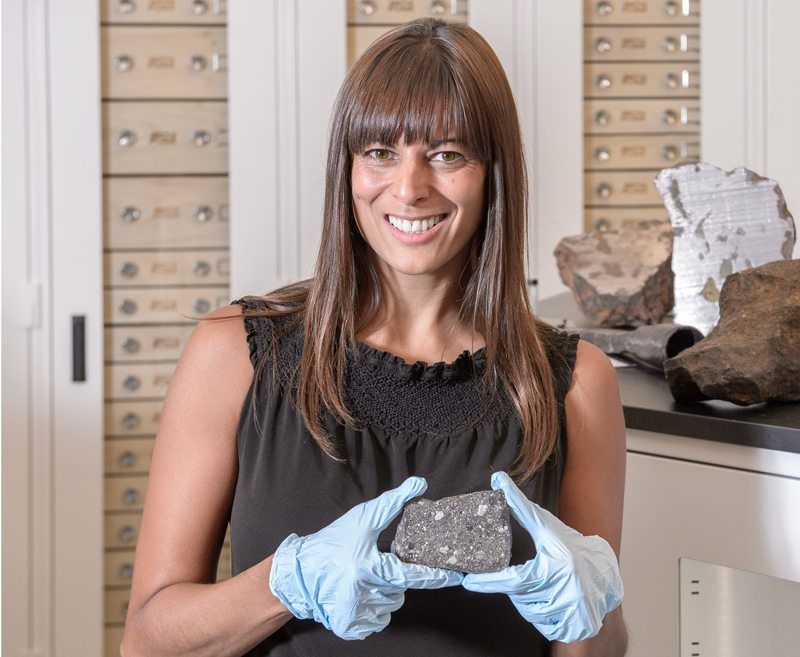Arizona State University’s Center for Meteorite Studies recently received a precious gift. Aside from its price tag, what makes this space rock so special is where it came from: the moon.
The new sample belongs to the rare class of meteorites originating from the moon called “lunaites.” Of all known distinct meteorites in this world, of which there are tens of thousands, less than a hundred are thought to come from the moon.
The softball-sized meteorite donation is valued at about a quarter of a million dollars, and is likely to be the most significant single donation ever made to the center.
“Of the tens of thousands of known meteorites (most of which come from asteroids), only a very tiny fraction are lunaites. So this is a very rare kind, even among meteorites, which are themselves quite rare among rocks found on Earth,” says Meenakshi Wadhwa, director of the center and professor in ASU’s School of Earth and Space Exploration. “This new sample is probably one of our most prized pieces and, without a doubt, one of the most significant recent additions to our collection.”
Known as Northwest Africa 7611, this meteorite was found near the Moroccan/Algerian border in May 2012. It was subsequently purchased by the donor, Jay Piatek, from a Moroccan meteorite dealer. Piatek is an avid meteorite collector and owns one of the more significant private collections in the world. He is a supporter and generous donor to university and museum collections.
The center has six other lunaites in its collection, but their total weight is only about 60 grams. As such, this new lunaite, weighing 311 grams, represents a five-fold increase in the total mass of lunar material in the collection. The total known weight of the original specimen was 916 grams, and the mass donated to the center is the largest remaining mass (or main mass) of this meteorite.

Classified as a lunar regolith breccia, this meteorite contains a mix of rock types from the moon’s mare and highlands. However, because there is very little mare material on the far side of the moon, this regolith breccia most likely came from the near side (that has both mare and highlands material).
The gift will be on display for the short term, but there are plans to use it for research purposes in future years.
“It is a beautiful, fresh-looking piece, with one cut and polished face that shows the internal texture and fabric of the rock – as such, it displays a unique snapshot of the lunar surface,” says the Center for Meteorites collections manager Laurence Garvie.
Consisting of specimens from around 2,000 separate meteorite falls and finds, meteorites in the center’s collection represent samples collected from every part of the world. Visitors may explore the collection weekdays, from 8 a.m. to 5 p.m., on the second floor of Interdisciplinary Science and Technology Building IV.




